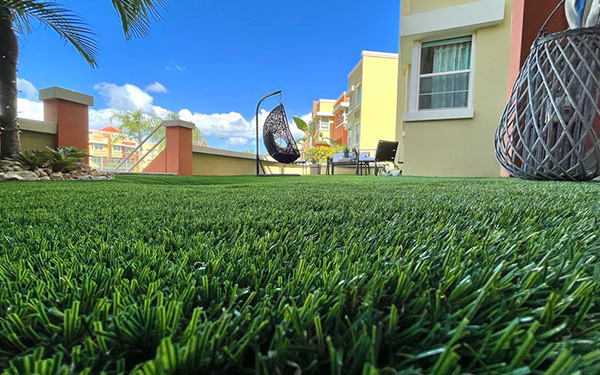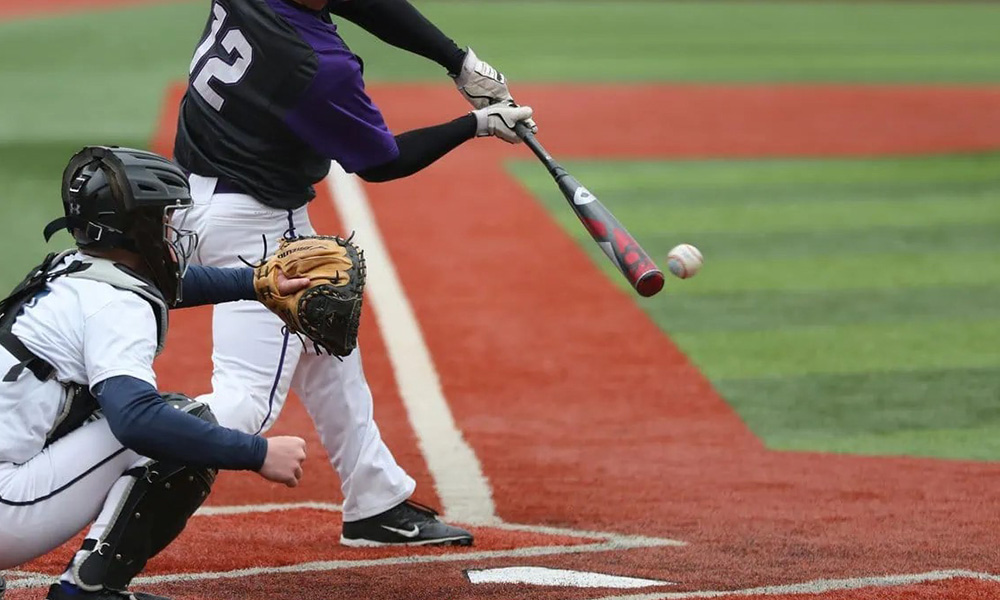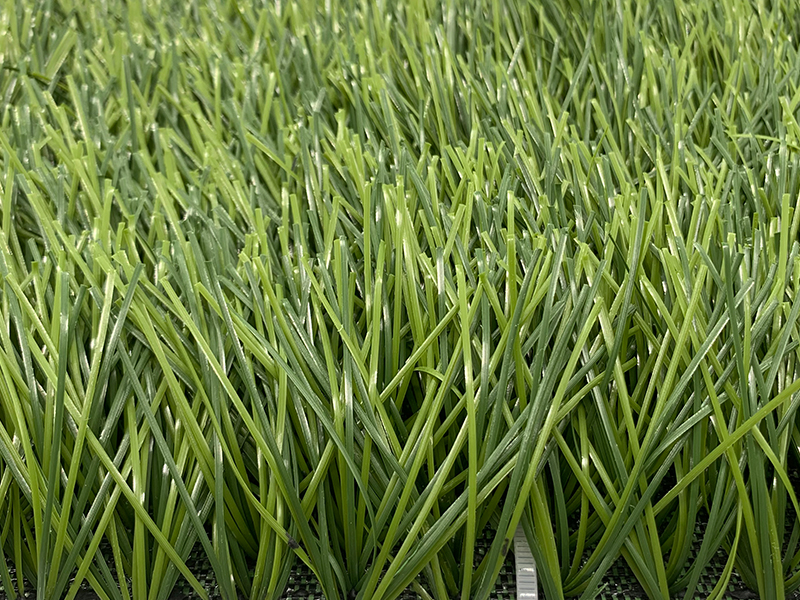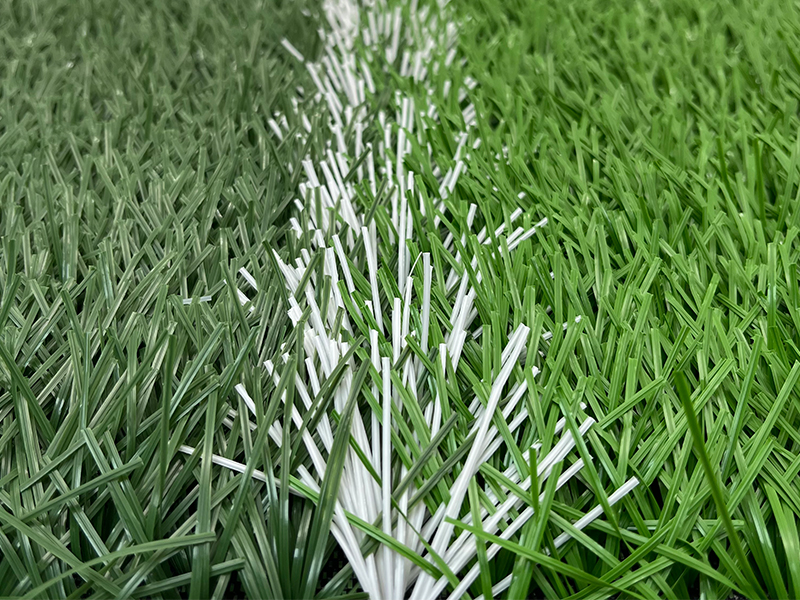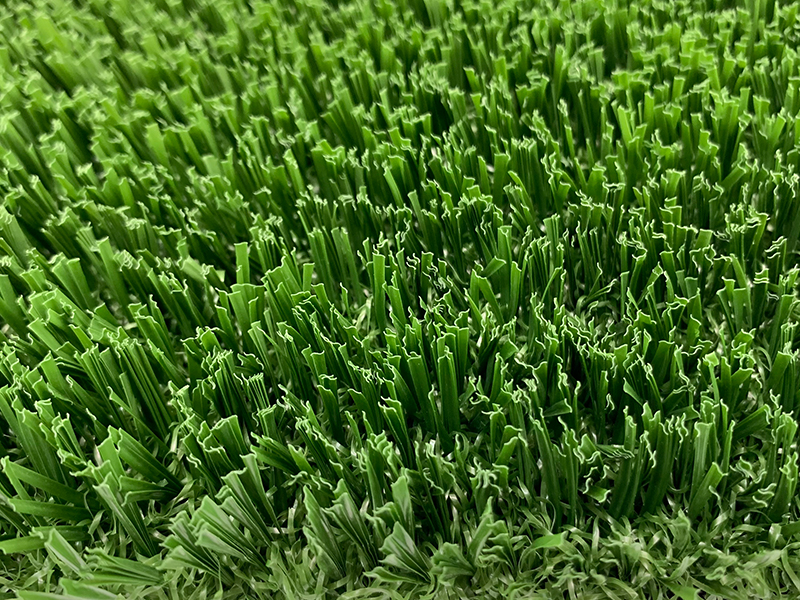Why do playgrounds prefer artificial turf?
Laying artificial turf in a playground is not just a matter of surface beauty, but more importantly, it is to build a stable, well-drained and durable foundation system. A professional foundation can not only extend the life of the lawn, but also ensure safety in use.
Why choose artificial turf for playgrounds?
Artificial turf provides a smooth, soft surface that is both durable and easy to maintain. It is an ideal choice for venues that need to withstand high traffic, extreme weather, and daily wear and tear.
Why is the foundation so important?
The playground is densely populated and frequently used, and the lawn needs to withstand greater pressure. If the foundation is not solid, the lawn is prone to sinking, water accumulation and even wrinkling, affecting the appearance and service life. Therefore, building a reasonable foundation structure is the prerequisite for ensuring the overall paving effect.
What are the common base materials?
The following are three base materials widely used for laying artificial turf:
Crushed stone layer: It has good structural stability and drainage capacity and is the most common base material. A solid support layer can be formed by compaction.
Decomposed Granite: A natural material that is durable and has natural drainage, suitable for playgrounds designed for natural environments.
Washed Concrete Sand: Uniform particles, compact structure, and both drainage and load-bearing performance.
These materials are usually used in combination, and are reasonably combined according to the project terrain and budget.
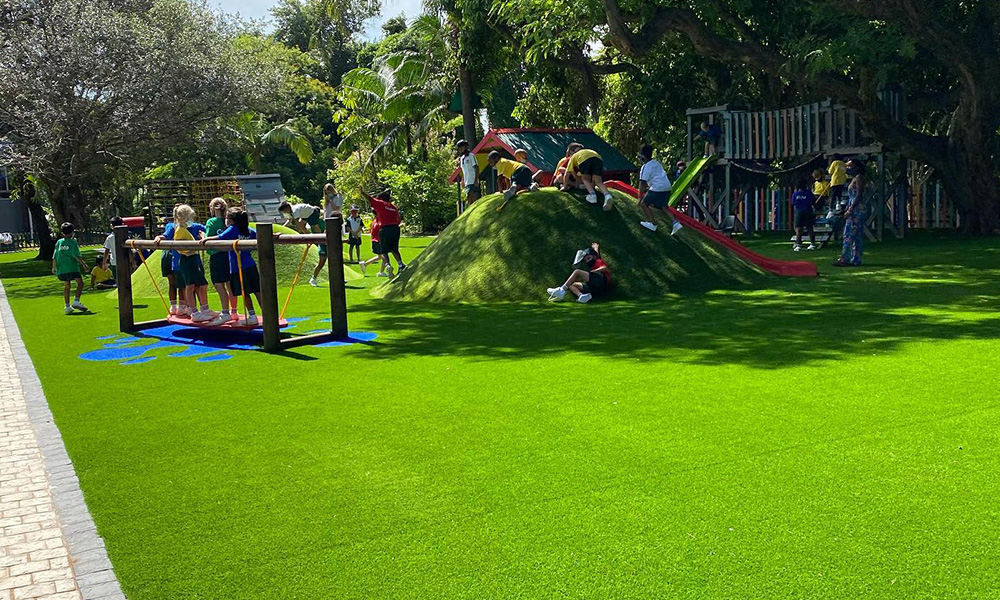
How to lay and compact the base material?
1. Base Treatment Process
Site Clearing and Leveling: Remove existing turf and debris to ensure a smooth, uneven surface.
Laying Base Materials: Lay a layer of gravel, granite, or a mixture of sand and gravel, 5-15 cm thick, according to project requirements, to meet the playground's load-bearing requirements.
Laying Layered Compaction: Compact the base materials layer by layer using a road roller to ensure adequate density, prevent future settlement, improve the turf's impact resistance and overall stability, and ensure safety in the playground.
2. Drainage System Design
Drainage efficiency directly affects the durability of the turf and the safety of play areas. Therefore, the following should be ensured:
-
Use highly permeable materials for the base layer to accelerate water infiltration;
-
Set a 1-2% drainage slope to guide rainwater naturally out and prevent slippery areas;
-
For complex sites, add concealed pipes or infiltration channels to enhance drainage efficiency and prevent the turf from deforming due to prolonged soaking.
3. Weed Control Fabric and Turf Installation
Weed control fabric is fully laid on the compacted base layer to effectively block weed growth and extend the lifespan of the turf. Then, the artificial turf is bonded, precisely cut, sewn, and filled in sequence to complete the overall installation.
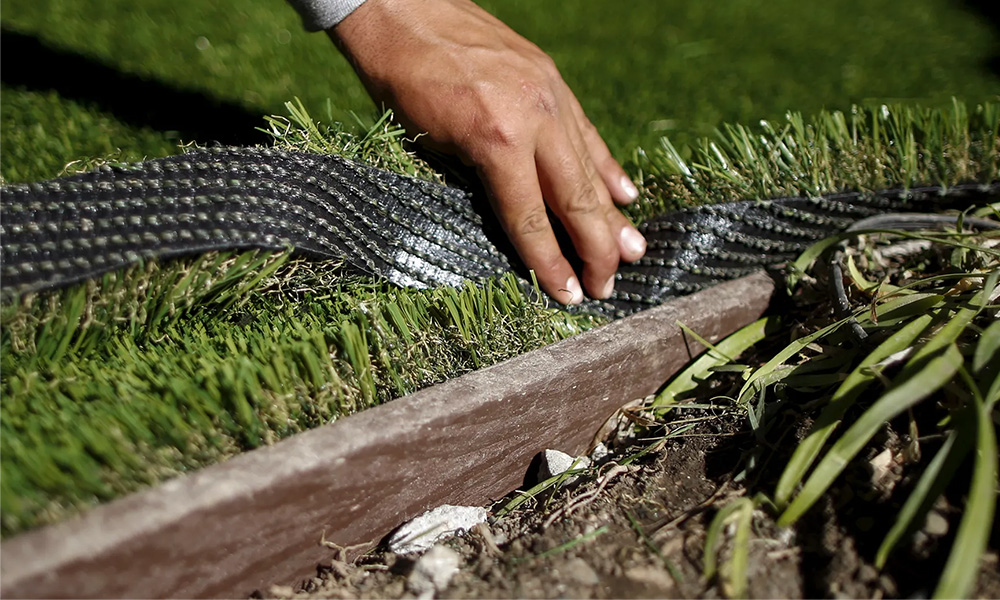
Advantages of Choosing Artificial Turf for Playgrounds
Artificial turf is ideal for playgrounds, meeting the needs of high-frequency use, child-friendly, and safe environments.
1. Safety and Protection
Artificial turf has built-in shock absorption and cushioning properties. Combined with a professional underlayment, it effectively absorbs impacts, reducing the risk of injury from bumps and falls when children run or fall. The surface is free of exposed soil and stones, preventing slips and scratches. The material is safe, odorless, soft, and skin-friendly, suitable for children to come into contact with in playgrounds.
2. Superior Durability
Playgrounds experience high foot traffic and frequent use. Artificial turf is highly resistant to trampling and abrasion, preventing bald patches and muddy areas. Its strong weather resistance ensures it won't fade or age over long-term use, resulting in a long lifespan and reducing the frequency of site renovations.
3. Easy Maintenance
Unlike natural lawns, artificial turf requires no watering or fertilization. Only regular cleaning of debris and checks of flatness are needed. It drains quickly after rain, preventing waterlogging, and is ready for use the next day without affecting playground operations. Long-term maintenance costs are only 1/3 of natural lawns, saving manpower and financial investment.
4. Environmentally Friendly
Made with environmentally friendly materials, it is pollution-free and meets green site requirements. It remains evergreen and does not fade year-round. Colors and patterns can be customized to match the playground's theme, enhancing the site's aesthetics and fun.
5. All-Weather Usability
Natural lawns turn yellow in winter and become muddy in the rainy season, making year-round use impossible. Artificial turf is unaffected by seasons or weather, allowing for year-round, all-weather operation and maximizing playground operating hours and space utilization.
Regular Maintenance
Even with excellent base construction quality, routine maintenance remains crucial for extending the lifespan of the lawn and ensuring safety for visitors.
-
Regular Inspection and Monitoring: Check the site weekly for signs of settlement or localized water accumulation, paying particular attention to low-lying areas to promptly identify potential problems.
-
Rapid Settlement Repair: If foundation settlement is detected, arrange for professional repairs immediately to prevent further damage that could affect the lawn's flatness and load-bearing capacity.
-
Drainage/Surface Cleaning: Clean drainage ditches monthly, removing debris and foreign objects from the lawn surface to prevent blockages and ensure a smooth drainage system and optimal lawn function.
A stable and well-drained foundation is the basis for the long-term use of artificial turf in playgrounds. Choosing suitable base materials (such as gravel, weathered granite, washed sand), and scientifically compacting and laying weed barrier can significantly improve the service life and safety performance of the lawn. With daily maintenance, it will bring users a more comfortable and safe activity environment.
